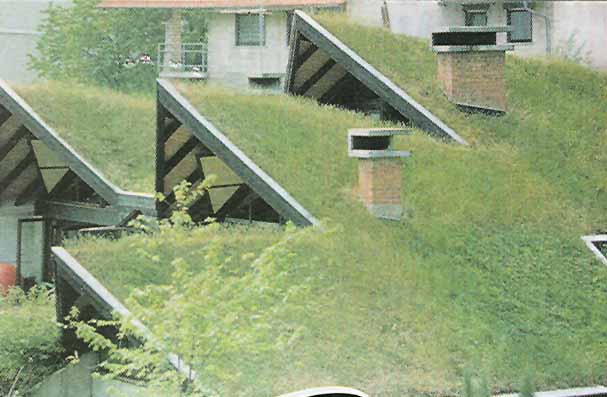 |
||
|
Greening Your Gables
|
||
|
Athens News
The benefits of grassy rooftops are manifold - they reduce heat, clean the air, improve biodiversity and are relatively affordable By Jennifer Gay |
 |
|
|
It is well known that Athens has a dearth of green space. The capital is the worst in Europe for the scarcity of trees gracing its hot and concreted environs, with just 2.5m2 of green per person. When compared to the 10m2 each person has access to in Rome, 12.7m2 in Paris and 27.2m2 in London, the deprivation of green becomes clear. The problem is exacerbated for today' s planners by the fact that many areas have very little space for planting. City planning has traditionally happened in a rather ad hoc way to say the least, with little consideration given to the long term environmental living conditions of the city's inhabitants. Unless green space is allocated for trees from the beginning it can be difficult fitting it in afterwards... but it's not impossible.
Rooftops are arguably the area with the greatest potential of all urban spaces for creating a higher environmental quality of life. A green roof or living roof is a roof covered with a dense mat of growing plants. Most people are familiar with the turf roofs used for centuries in Iceland; green roofs (developed in Germany in the 60s and 70s), essentially adopt the idea of turf roofs but instead of using mostly grasses, they employ drought- resistant plants appropriate to the tough conditions on a roof top. At its most basic, a waterproof membrane is installed on the roof, which is then covered with 8-15cm of soil and planted with low-growing succulents and alpine plants. Techniques have become more sophisticated over the years and nowadays water-holding natural fibre panels are available, which give seeds or young plants good anchorage and ensure efficient water supply. The effect of green roofs can be astonishingly beautiful, especially when the plants start to flower. Succulents such as stonecrops and houseleeks are often the plants of choice because they can tolerate hot, dry conditions. The benefits of a green roof are significant for both the environment and the purse.
The method is simple and installation is easy, with no skilled labour involved. The company has created panels made from environmentally friendly natural fibres which are fully biodegradable and formulated to give plants optimum growing conditions. The panels are manually laid side by side over a soil surface (this may be as thin as 8cm on a roof top) and fixed down by anchor hooks. Plants or seeds are introduced into the panels and stabilised with a little topsoil. Once the planting panels have absorbed irrigation water, they form a protective layer for the soil and act as a growing medium. The panels store water and nutrients, releasing them slowly so the plants receive a steady, efficient moisture supply. This enables the plants to stay healthy and withstand adverse conditions such as heat and winds. Quickly forming vegetative cover, the panels can be used to give quick rooftop cover or to act as a catalyst for revitalising eroded ground. Says von Wallbrunn: "The roof load of the system is only 40kg/m2 - usually no special structural reinforcement is needed, making the Secalflor Green Roof suitable for existing and new buildings." Eventually the panels bond to the substrate and the roots penetrate the panel to reach the soil beneath. The panels substantially slow the rate of evaporation, maintaining optimum ambient temperature and regulation of moisture. A microclimate similar to the moss layer in a forest is created and over time, Secalflor develops humus. The panels have been shown to save up to 60 percent water when compared to normal methods of establishment. Aside from their rooftop application, the panels have proven themselves excellent for re-establishment of vegetation in drought situations - they were successfully employed for re-establishing vegetation in the Gobi Desert, China, and also in desert-like areas of Taiwan. The panels have an application for industrial/contaminated sites, such as open cast mines and waste dumps and can be employed for stabilising steep gradients, like motorways embankments and shorelines. It seems there is plenty of potential for its use here in Greece. For more information, contact Bernd von Wall brunn, 4 Salami nos St, 24100 Kalamata, |
||
|
HCS readers can view other excellent articles by Jennifer Gay in the News & Issues and especially the Food, Recipes, and Garden section of our archives at the URL http://www.helleniccomserve.com./contents.html
All articles of Athens News appearing on HCS have been reprinted with permission. |
||
|
||
|
2000 © Hellenic Communication Service, L.L.C. All Rights Reserved.
http://www.HellenicComServe.com |
||

